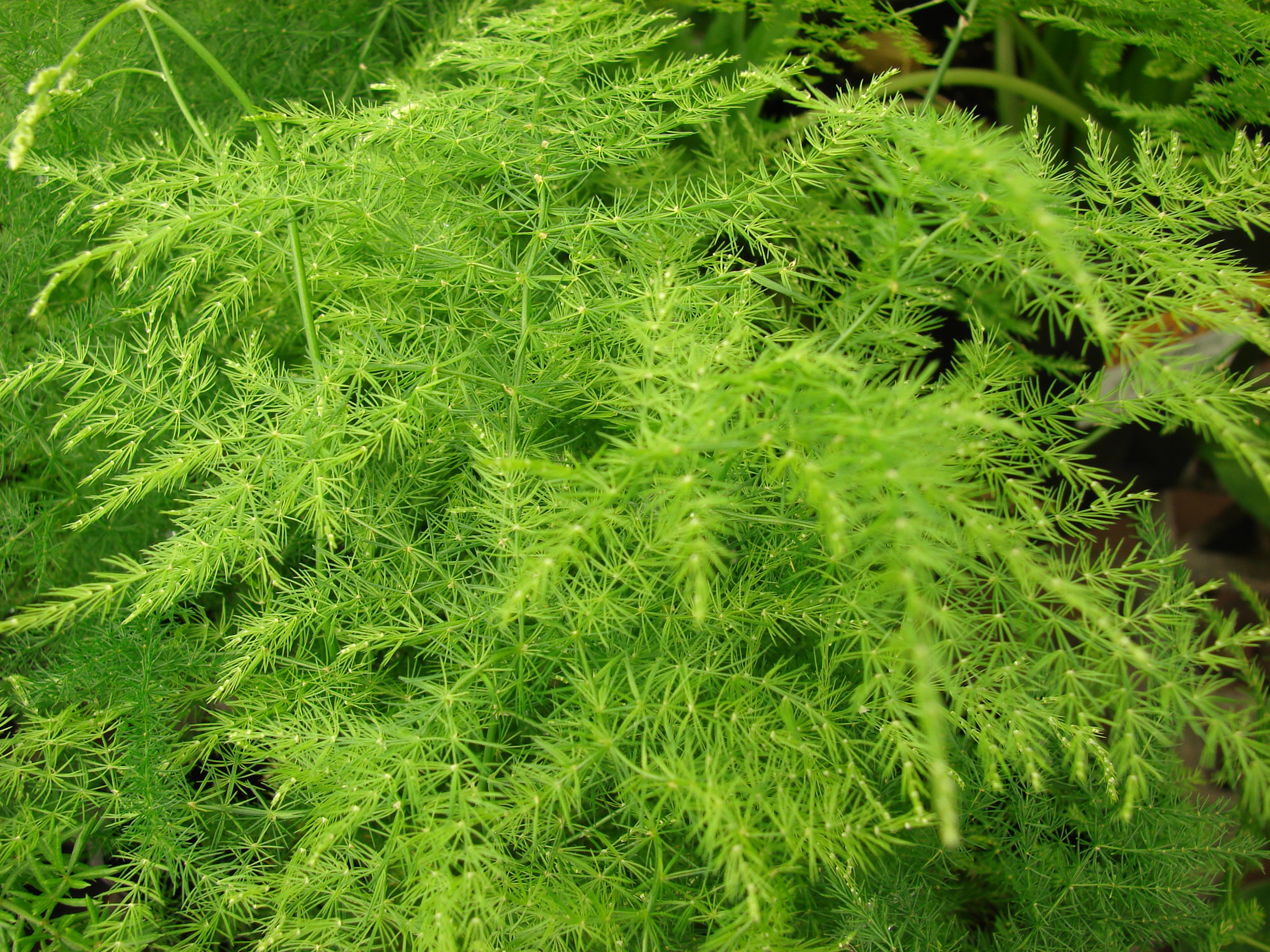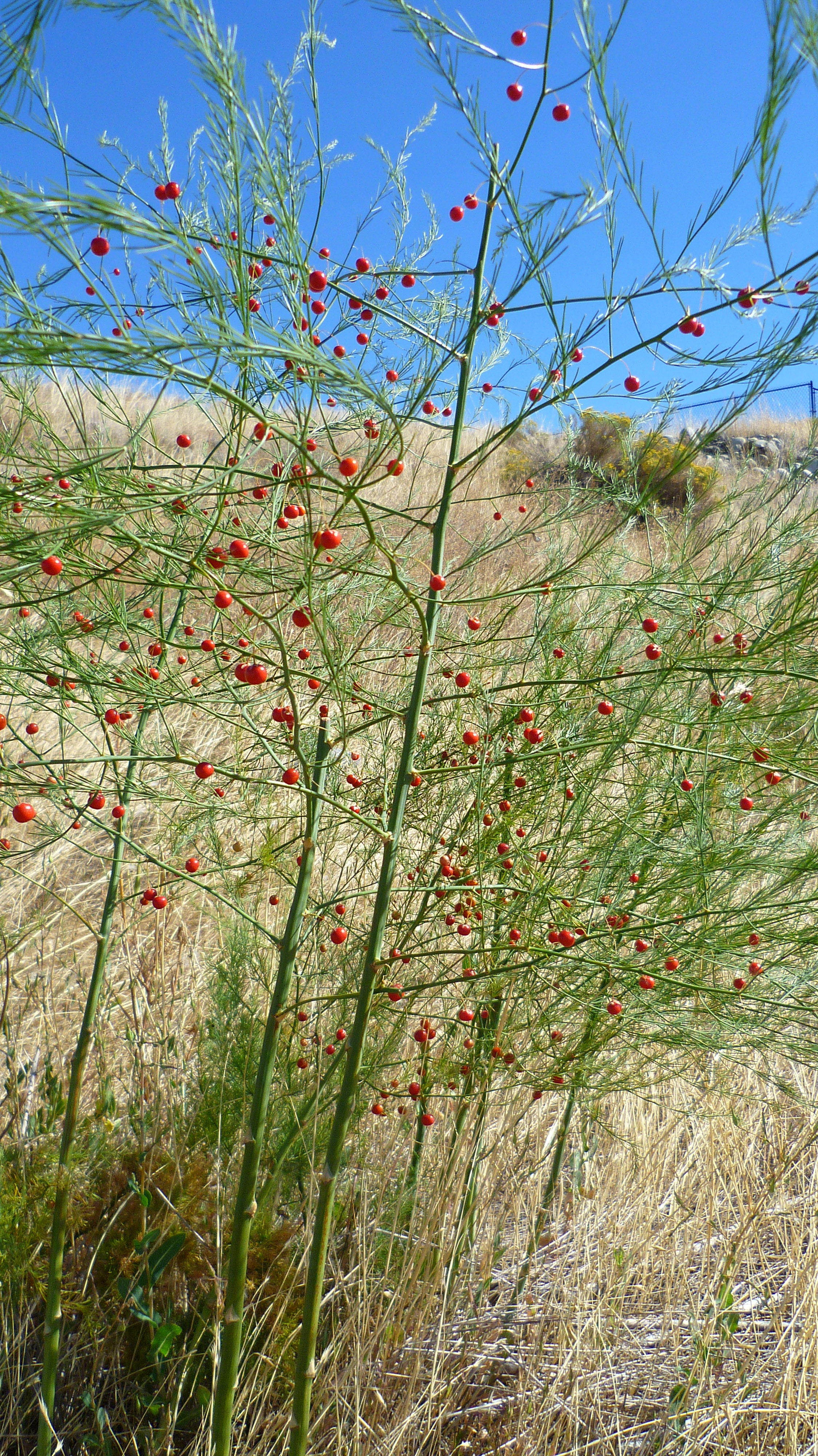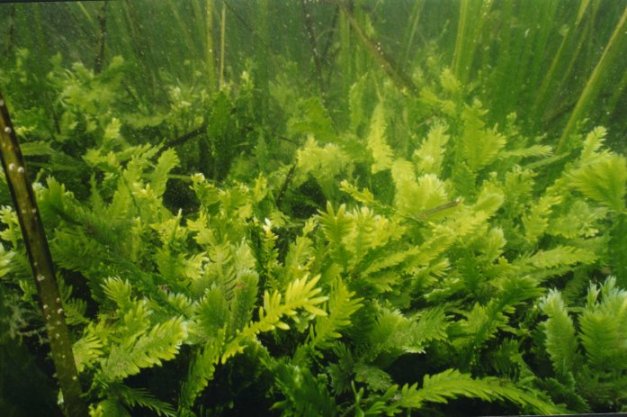|
Asparagus Setaceus
''Asparagus setaceus'', with the common names of common asparagus fern, asparagus grass, lace fern, climbing asparagus, or ferny asparagus, is a plant in the family ''Asparagaceae'' native to southern Africa. Despite its common name, the plant is not a true fern, but has leaves that resemble one. Naming Originally described by the German botanist Carl Sigismund Kunth, its Latin specific epithet ''setaceus'' means "hairy". Description ''Asparagus setaceus'' is a scrambling evergreen perennial with tough green stems and leaves, which may reach several metres in length. The leaves are actually leaf-like cladodes up to 7 mm long by 0.1 mm in diameter, which arise in clumps of up to 15 from the stem, making a fine, soft green fern-like foliage. Sharp barbed thorns occur on the stem. Occurring from spring to autumn, the small greenish-white bell-shaped flowers are 0.4 cm long, and are followed by small green berries, which blacken with maturity. They are reportedly ... [...More Info...] [...Related Items...] OR: [Wikipedia] [Google] [Baidu] |
Carl Sigismund Kunth
Carl Sigismund Kunth (18 June 1788 – 22 March 1850) was a German botanist. He was also known as Karl Sigismund Kunth or anglicized as Charles Sigismund Kunth. He was one of the early systematic botanists who focused on studying the plants of the Americas. Kunth's notable contributions include the publication of ''Nova genera et species plantarum quas in peregrinatione ad plagam aequinoctialem orbis novi collegerunt Bonpland et Humboldt''. This work spanned seven volumes and was published between 1815 and 1825. Early life Kunth was born in Leipzig, Saxony, in modern-day Germany. His uncle, Gottlob Johann Christian Kunth, was a politician and educator who tutored both the explorer Alexander von Humboldt and his older brother, the diplomat Wilhelm von Humboldt, as children. Growing up, Kunth's father didn't have enough money for him to continue studying at the Leipzig Rathsschule. His uncle paid for him to move to Berlin, then a part of Prussia, and take a position at the Pru ... [...More Info...] [...Related Items...] OR: [Wikipedia] [Google] [Baidu] |
Temperate Climate
In geography, the temperate climates of Earth occur in the middle latitudes (approximately 23.5° to 66.5° N/S of the Equator), which span between the tropics and the polar regions of Earth. These zones generally have wider temperature ranges throughout the year and more distinct seasonal changes compared to tropical climates, where such variations are often small; they usually differ only in the amount of precipitation. In temperate climates, not only do latitudinal positions influence temperature changes, but various sea currents, prevailing wind direction, continentality (how large a landmass is) and altitude also shape temperate climates. The Köppen climate classification defines a climate as "temperate" C, when the mean temperature is above but below in the coldest month to account for the persistence of frost. However, some adaptations of Köppen set the minimum at . Continental climates are classified as D and considered to be varieties of temperate climates, ... [...More Info...] [...Related Items...] OR: [Wikipedia] [Google] [Baidu] |
Flora Of Southern Africa
Flora (: floras or florae) is all the plant life present in a particular region or time, generally the naturally occurring ( indigenous) native plants. The corresponding term for animals is ''fauna'', and for fungi, it is '' funga''. Sometimes bacteria and fungi are also referred to as flora as in the terms ''gut flora'' or ''skin flora'' for purposes of specificity. Etymology The word "flora" comes from the Latin name of Flora, the goddess of plants, flowers, and fertility in Roman mythology. The technical term "flora" is then derived from a metonymy of this goddess at the end of the sixteenth century. It was first used in poetry to denote the natural vegetation of an area, but soon also assumed the meaning of a work cataloguing such vegetation. Moreover, "Flora" was used to refer to the flowers of an artificial garden in the seventeenth century. The distinction between vegetation (the general appearance of a community) and flora (the taxonomic composition of a community) wa ... [...More Info...] [...Related Items...] OR: [Wikipedia] [Google] [Baidu] |
Asparagus
Asparagus (''Asparagus officinalis'') is a perennial flowering plant species in the genus ''Asparagus (genus), Asparagus'' native to Eurasia. Widely cultivated as a vegetable crop, its young shoots are used as a spring vegetable. Description Asparagus is an herbaceous, perennial plant growing typically to tall, with stout stems with much-branched, feathery foliage. It has been known to grow as long as . The 'leaves' are needle-like cladodes (Aerial stem modification, modified stems) in the Leaf#Morphology, axils of scale leaves; they are long and broad, and clustered in fours, up to 15, together, in a rose-like shape. The root system, often referred to as a 'crown', is adventitious; the root type is Fascicle (botany), fasciculated. The flowers are bell-shaped, greenish-white to yellowish, long, with six tepals partially fused together at the base; they are produced singly or in clusters of two or three in the junctions of the branchlets. It is usually dioecious, with male ... [...More Info...] [...Related Items...] OR: [Wikipedia] [Google] [Baidu] |
Sapogenin
Sapogenins are aglycones (non-saccharide moieties) of saponins, a large family of natural products. Sapogenins contain steroid or other triterpene frameworks as their key organic feature. For example, steroidal sapogenins such as tiggenin, neogitogenin, and tokorogenin have been isolated from the tubers of '' Chlorophytum arundinaceum''. Some steroidal sapogenins can serve as a practical starting point for the semisynthesis Semisynthesis, or partial chemical synthesis, is a type of chemical synthesis that uses chemical compounds isolated from natural sources (such as microbiology, microbial cell cultures or plant material) as the starting materials to produce novel ... of particular steroid hormones. Diosgenin and hecogenin are other examples of sapogenins. References Phytochemicals Triterpenes Alcohols {{organic-compound-stub ... [...More Info...] [...Related Items...] OR: [Wikipedia] [Google] [Baidu] |
Queensland
Queensland ( , commonly abbreviated as Qld) is a States and territories of Australia, state in northeastern Australia, and is the second-largest and third-most populous state in Australia. It is bordered by the Northern Territory, South Australia and New South Wales to the west, south-west and south, respectively. To the east, Queensland is bordered by the Coral Sea and the Pacific Ocean; to the state's north is the Torres Strait, separating the Australian mainland from Papua New Guinea, and the Gulf of Carpentaria to the north-west. With an area of , Queensland is the world's List of country subdivisions by area, sixth-largest subnational entity; it List of countries and dependencies by area, is larger than all but 16 countries. Due to its size, Queensland's geographical features and climates are diverse, and include tropical rainforests, rivers, coral reefs, mountain ranges and white sandy beaches in its Tropical climate, tropical and Humid subtropical climate, sub-tropical c ... [...More Info...] [...Related Items...] OR: [Wikipedia] [Google] [Baidu] |
New South Wales
New South Wales (commonly abbreviated as NSW) is a States and territories of Australia, state on the Eastern states of Australia, east coast of :Australia. It borders Queensland to the north, Victoria (state), Victoria to the south, and South Australia to the west. Its coast borders the Coral Sea, Coral and Tasman Seas to the east. The Australian Capital Territory and Jervis Bay Territory are Enclave and exclave, enclaves within the state. New South Wales' state capital is Sydney, which is also Australia's most populous city. , the population of New South Wales was over 8.3 million, making it Australia's most populous state. Almost two-thirds of the state's population, 5.3 million, live in the Greater Sydney area. The Colony of New South Wales was founded as a British penal colony in 1788. It originally comprised more than half of the Australian mainland with its Western Australia border, western boundary set at 129th meridian east in 1825. The colony then also includ ... [...More Info...] [...Related Items...] OR: [Wikipedia] [Google] [Baidu] |
Noxious Weed
A noxious weed, harmful weed or injurious weed is a weed that has been designated by an agricultural or other governing authority as a plant that is harmful to agricultural or horticultural crops, natural habitats or ecosystems, or humans or livestock. Most noxious weeds have been introduced species, introduced into an ecosystem by ignorance, mismanagement, or accident. Some noxious weeds are native, though many localities define them as necessarily being non-native. Typically they are plants that grow aggressively, multiply quickly without natural controls (native herbivores, soil chemistry, etc.), and display adverse effects through contact or ingestion. Noxious weeds are a large problem in many parts of the world, greatly affecting areas of agriculture, forestry, forest management, nature reserves, regional park, parks and other open space. Many noxious weeds have come to new regions and countries through contaminated shipments of feed and crop seeds or were intentionally introd ... [...More Info...] [...Related Items...] OR: [Wikipedia] [Google] [Baidu] |
Norfolk Island
Norfolk Island ( , ; ) is an States and territories of Australia, external territory of Australia located in the Pacific Ocean between New Zealand and New Caledonia, directly east of Australia's Evans Head, New South Wales, Evans Head and about from Lord Howe Island. Together with the neighbouring Phillip Island (Norfolk Island), Phillip Island and Nepean Island (Norfolk Island), Nepean Island, the three islands collectively form the Territory of Norfolk Island. At the 2021 Australian census, 2021 census, it had 2,188 inhabitants living on a total area of about . Its capital is Kingston, Norfolk Island, Kingston. East Polynesians were the first to settle Norfolk Island, but they had already departed when Kingdom of Great Britain, Great Britain settled it as part of its 1788 colonisation of Australia. The island served as a penal colony, convict penal settlement from 6 March 1788 until 5 May 1855, except for an 11-year hiatus between 15 February 1814 and 6 June 1825, when ... [...More Info...] [...Related Items...] OR: [Wikipedia] [Google] [Baidu] |
Lord Howe Island
Lord Howe Island (; formerly Lord Howe's Island) is an irregularly crescent-shaped volcanic remnant in the Tasman Sea between Australia and New Zealand, part of the Australian state of New South Wales. It lies directly east of mainland Port Macquarie, northeast of Sydney, and about southwest of Norfolk Island. It is about long and between wide with an area of , though just of that comprise the low-lying developed part of the island. The island is named after Richard Howe, 1st Earl Howe. Along the west coast is a sandy semi-enclosed sheltered coral reef lagoon. Most of the population lives in the north, while the south is dominated by forested hills rising to the highest point on the island, Mount Gower (). The Lord Howe Island Group comprises 28 islands, islets, and rocks. Apart from Lord Howe Island itself, the most notable of these is the volcanic and uninhabited Ball's Pyramid about to the southeast of Howe. To the north lies the Admiralty Group, a cluster of seven ... [...More Info...] [...Related Items...] OR: [Wikipedia] [Google] [Baidu] |
Weed
A weed is a plant considered undesirable in a particular situation, growing where it conflicts with human preferences, needs, or goals.Harlan, J. R., & deWet, J. M. (1965). Some thoughts about weeds. ''Economic botany'', ''19''(1), 16-24. Plants with characteristics that make them hazardous, aesthetically unappealing, difficult to control in managed environments, or otherwise unwanted in agriculture, farm land, Orchard, orchards, gardens, lawns, Park, parks, recreational spaces, residential and industrial areas, may all be considered weeds.Holzner, W., & Numata, M. (Eds.). (2013). ''Biology and ecology of weeds'' (Vol. 2). Springer Science & Business Media. The concept of weeds is particularly significant in agriculture, where the presence of weeds in fields used to grow crops may cause major losses in yields. Invasive species, plants introduced to an environment where their presence negatively impacts the overall functioning and biodiversity of the ecosystem, may also sometime ... [...More Info...] [...Related Items...] OR: [Wikipedia] [Google] [Baidu] |
Hardiness (plants)
Hardiness of plants describes their ability to survive adverse growing conditions. It is usually limited to discussions of climatic adversity. Thus a plant's ability to tolerate cold, heat, drought, flooding, or wind are typically considered measurements of hardiness. Hardiness of plants is defined by their native extent's geographic location: longitude, latitude and elevation. These attributes are often simplified to a hardiness zone. In temperate latitudes, the term most often describes resistance to cold, or "cold-hardiness", and is generally measured by the lowest temperature a plant can withstand. Hardiness of a plant may be divided into two categories: tender, and hardy. Tender plants are those killed by freezing temperatures, while hardy plants survive freezing—at least down to certain temperatures, depending on the plant. "Half-hardy" is a term used sometimes in horticulture to describe bedding plants which are sown in heat in winter or early spring, and planted outsi ... [...More Info...] [...Related Items...] OR: [Wikipedia] [Google] [Baidu] |







